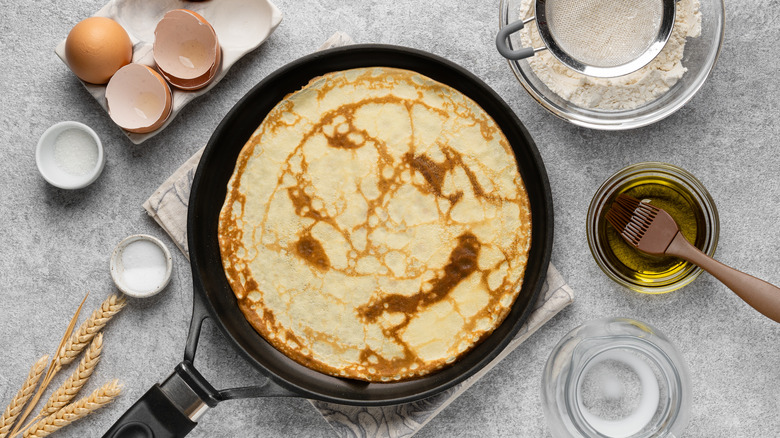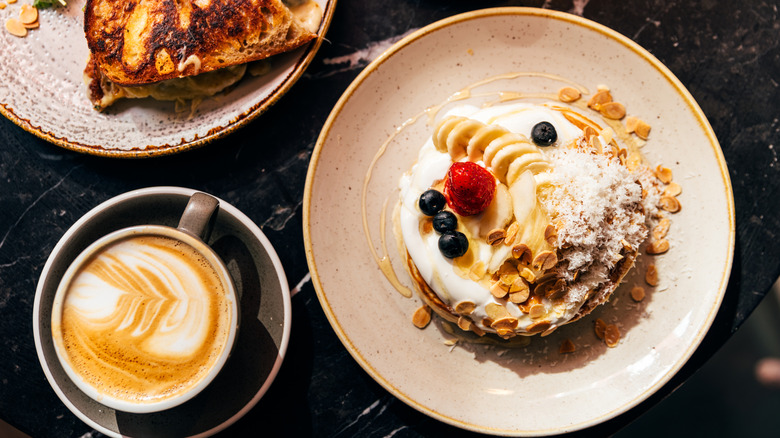What's The Actual Difference Between Crepes And Pancakes?
Pancakes have been a culinary staple since ancient times. Seemingly since civilization could cook, there the humble pancake was found. The comforting classic settled in as a regular for breakfast, brunch and even dessert as it gained popularity. Over time, many cultures adopted their own version of the pancake, such as the Japanese okonomiyaki and the Swedish plättar or syltkakor.
While the varieties are many, one of the most similar types is the elegantly thin crepe. This makes sense as both can be paired, topped, and dressed with nearly the same things. Even their base batters with ingredients like flour, eggs, and milk strongly resemble each other. However, it's here where the key difference lies: Pancakes employ leavening agents like baking powder and baking soda, and crepes do not.
This simple ingredient is a major player in providing the pancake's thick fluffiness as opposed to the crepe's thin structure and crisp texture. Furthermore, the two utilize distinct cooking methods. The pancake — aiming to be an airy pillow and only a little crispy – is typically cooked on a griddle or frying pan at medium-high heat. The sophisticated crepe, however, should be tender, lightly crunchy, and tends to be larger in diameter as its batter is swirled around to spread over the bottom of a crepe pan or skillet in a thin layer. This allows it to be a presenter of sorts as it's rolled or folded into its filling teammates.
Customizing your pancakes and crepes
Pancakes and crepes are products of culinary creativity as they can be simple or decadent. In their own way, pancakes love being stacked and paired with sweet and fruity friends. Their thicker consistency also caters to incorporating bursts of flavors inside such as with banana pancakes. In contrast, crepes love to wrap up and swaddle their fillings like a blanket. While both can be flourished with toppings such as powdered sugar, syrups, and berries, it's not uncommon for crepes to lean more often into savory options like salmon and spinach or even turkey.
That doesn't mean one is inherently more versatile than the other, though. As they're so alike, it's easy to experiment with them in a number of ways. Something as simple as swapping your milk for yogurt in the pancake or crepe batter will go the distance in changing the delicious ways you make them. Yogurt can even add the complexity of a tangier flavor while bringing in its added benefits like protein and probiotics. This is done more easily with pancakes as the acid in Greek yogurt can help activate the leavening agents. If you're attempting to do this with crepes, you'll want to operate with a three-to-one water to yogurt ratio to maintain the flatness of the crepe.
The path to the perfect pancakes is often led by the heart. I add pumpkin puree to my pancake recipe and top it with butter, syrup, and pecans. This is a great choice for fall or any time of your liking and can even be added to your favorite crepe batter.


